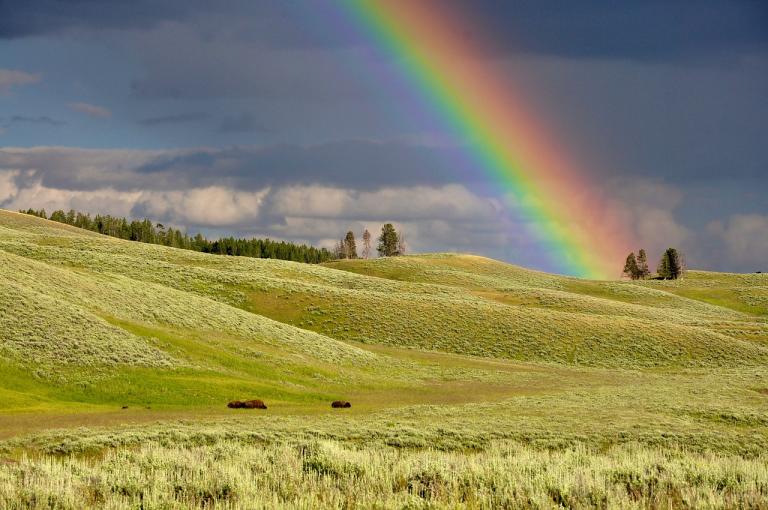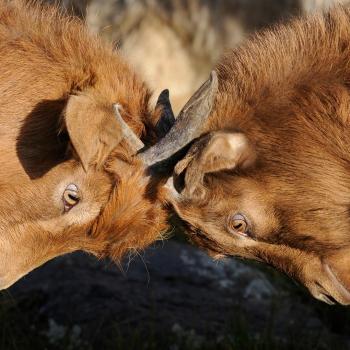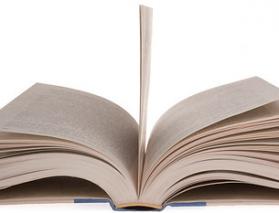
Stories
I love stories. A good story is entertaining and absorbing, and I love getting swept up into a narrative. But good stories do more than this. A really well told story can make me see the world differently, challenge an assumption of mine, initiate me into a new perspective. At times in my life, a story has expressed something about my own experience in a way that made me feel connected and seen and less alone. Other stories have taken me out of my own experience so completely that I can never quite go back. In other words, well-crafted stories can be pathways to transformation.
When a whole community engages the same story together, it can transform the community, too. I think this is the genius of religious communities bound together by a shared story. That story can be distorted, of course, used as a tool of control and oppression. But the stories in Scripture can also be profoundly liberating and expanding when a community takes them seriously together over time. There are Jewish communities, for example, who draw continual inspiration from the story of the Exodus from Egypt for the ongoing care of the stranger and the oppressed, the ongoing creation of liberation in the world.
The broader American culture is slowly moving away from the Jewish and Christian scriptures as the story we all share, that we can all dive into together for renewal and inspiration and transformation. Fewer and fewer people know the content well enough to dig in at this level, and fewer and fewer people feel personally connected to these texts. As Unitarian Universalists, we do not have a common relationship to any particular scripture. For some of us, the Jewish and Christian scriptures are foundational texts, for others they are sources of pain and trauma, for others, they are distant and not at all well-known. For some of us, other scriptures are more important, such as the Koran, or Buddhist sutras, or the works of particular poets. We do not share a common sacred text, and so it is not to scripture that we can turn for the stories we can plunge into together.
New stories are being told all the time, of course, and some of those stories speak to a critical mass of people to the point that they can become tools of collective meaning-making. Game of Thrones, for example, had a wide enough following to inspire derivative works and fan obsessions and conversations about its lessons for real life.
There is a certain magic, though, in the things we can do with stories that are old and deeply familiar. Stories that are so foundational that we all know them, we can recognize them even when key elements are altered. There is a certain fascination in hearing a familiar story told in a new way. It can open horizons, make us think about things differently, bring us closer to the possibility of telling our own stories.
Fairytales
This is one of the reasons I love fairytales. They are familiar enough that we can all recognize them. When they are told with key elements transformed, we can still understand the context, and we can be surprised and intrigued by the transformation. We know them well enough that we can join in the process of imagining how they might be different. We can ask all kinds of what if questions. They seem simple, but fairytales have the potential to be agents of meaning, if we invest some time in them together, as we will be doing this month.
And yet, as a queer person, it’s not always easy to relate to fairytales. In their traditional form, fairytales usually serve to reinforce a straight-centered narrative. The beautiful woman, the handsome prince, some obstacle to be overcome in their love story, the triumph of their straight love in the end. If we are going to use these stories to challenge and intrigue ourselves and each other, to look for new meanings and create new outcomes together, we’re going to have to start by queering them.
So what does it look like to queer fairytales? As Charlie Glickman suggests, in this essay, it involves looking at the foundations of the story and questioning them. And it involves looking for places where there is elasticity, where we can stretch the story and transform it into something new. Because fairytales are so simple and so well-known, they are actually very elastic. There is all kinds of room for telling them differently, in ways that show the possibilities for queerness within them.
Perhaps the simplest way of queering fairytales is just to play with the genders of the people involved. This morning’s wonder box story, for example, is simply Sleeping Beauty with a female love interest rather than the traditional prince. There are actually a bunch of novel-length treatments of traditional fairytales where authors change the gender of the hero or the heroine or make some or all of the central characters transgender or non-binary. Or have the central love story be slightly different than the traditional. For example, in Malinda Lo’s book Ash, Cinderella falls in love with the head of the hunt, who is a woman, rather than with the prince.
Personally, I find this way of queering fairytales very satisfying – finding myself in a place where my own identity and experience is usually absent. And telling these stories in this way allows us to look at the places where queer identities and relationships are left out of the narrative – and gives us models for how to tell our stories in more inclusive ways.
More ways to queer fairytales
Let’s not stop there, though. There are many more ways to queer fairytales. In a paper written in 2012, Barbie Curatolo talks about reading past the ending of a story as a way of opening new possibilities. She uses a novel by Jeanette Winterson as one of her examples. In the middle of this novel, the narrator meets the twelve princesses from the story of the dancing princesses. In the traditional story, twelve princesses are kept under lock and key at night, and yet each morning, their shoes are worn out, as if they have danced all night. The king offers a reward to anyone who can solve the mystery. A hopeful man comes to see what he can discover, only pretending to drink the sleeping potion laced wine that had undone all those who had made previous attempts. He stays awake, and sees the princesses leave through a hole that mysteriously opens in the floor, to spend the night dancing with twelve princes from another world.
In Jeanette Winterson’s version, the princesses are not quite bound by gravity, and so at night, they float to a magical flying city where they dance the night away. After they are discovered, they are married off to the prince who solved the mystery and his eleven princely brothers. The princess who narrates the story says, “He had eleven brothers and we were all given in marriage, one to each brother, and as it says lived happily ever after. We did, but not with our husbands.”
Telling her own story, this sister says:
I have always enjoyed swimming, and it was in deep waters one day that I came to a coral cave and saw a mermaid combing her hair. I fell in love with her at once, and after a few months of illicit meetings, my husband complaining all the time that I stank of fish, I ran away and began housekeeping with her in perfectly salty bliss.
By the time the novel’s narrator meets her, the princess lives in the bottom floor of a tall house she shares with her other sisters, next to the well in which dwells her mermaid love.
In addition to continuing beyond the ending, we could also begin before the beginning, imagining a different origin for the fairytale. Wicked is an example of this, both the book and the musical. They tell the story of the relationship between Glinda and the wicked witch of the west – named Elphaba in the retelling. Though Glinda and Elphaba are both straight in this retelling, it gives us an opening in which we could imagine that they were not just friends but in love. Or it could give us a model for imagining the backstories of other fairytales.
In the same paper I mentioned earlier, Barbie Curatolo also talks about the gothic retelling of fairytales, where the cruel or brutal aspects of the story are heightened and leaned into as a commentary on oppressive forms that exist in real-life too. Two of the other sisters in Jeanette Winterson’s version of the twelve princesses are in happy queer relationships, one with a gender bending partner, the other with a woman. But both are violently disrupted when they came to the attention of others. These treatments of these tales is far less satisfying, much harder to read. But the nevertheless have a certain power to them, the power inherent in the intense discomfort we feel when reading them. That discomfort with fictional violence can inspire action to counter the very real violence in the very real world.
These techniques of changing the identities of well-known characters, reading beyond the ending and before the beginning, and leaning into discomfort can all open space to see queer people and queer experience in stories where we did not expect to find them. They can also be used to transform stories on other ways. To challenge the oppressive confines of the traditional roles for women, for example, or to force a confrontation with racial violence.
What if?
Charlie Glickman suggests that queering something – queering everything – is a practice rather than a finished goal or project. It is the act of reimagining something – or reimagining everything. Of asking questions we hadn’t thought to ask, of suggesting stories we hadn’t thought to tell. Queering fairytales begins, I think, with a series of what if questions.
What if Sleeping Beauty were in love with a woman? What if the dancing princess left her husband for a mermaid? What if Glinda and the Wicked Witch were best friends at some earlier point in time?
What other questions can we imagine? What if we remembered that the stepsisters in Cinderella have also lost a parent? Would that change the way we feel about them? What if the mirror in Snow White is just a regular mirror that the queen believes is magic? What if the villains have been framed and the seemingly innocent are actually just excellent propagandists? What other questions can you imagine? How do the answers open new possibilities for you?

















